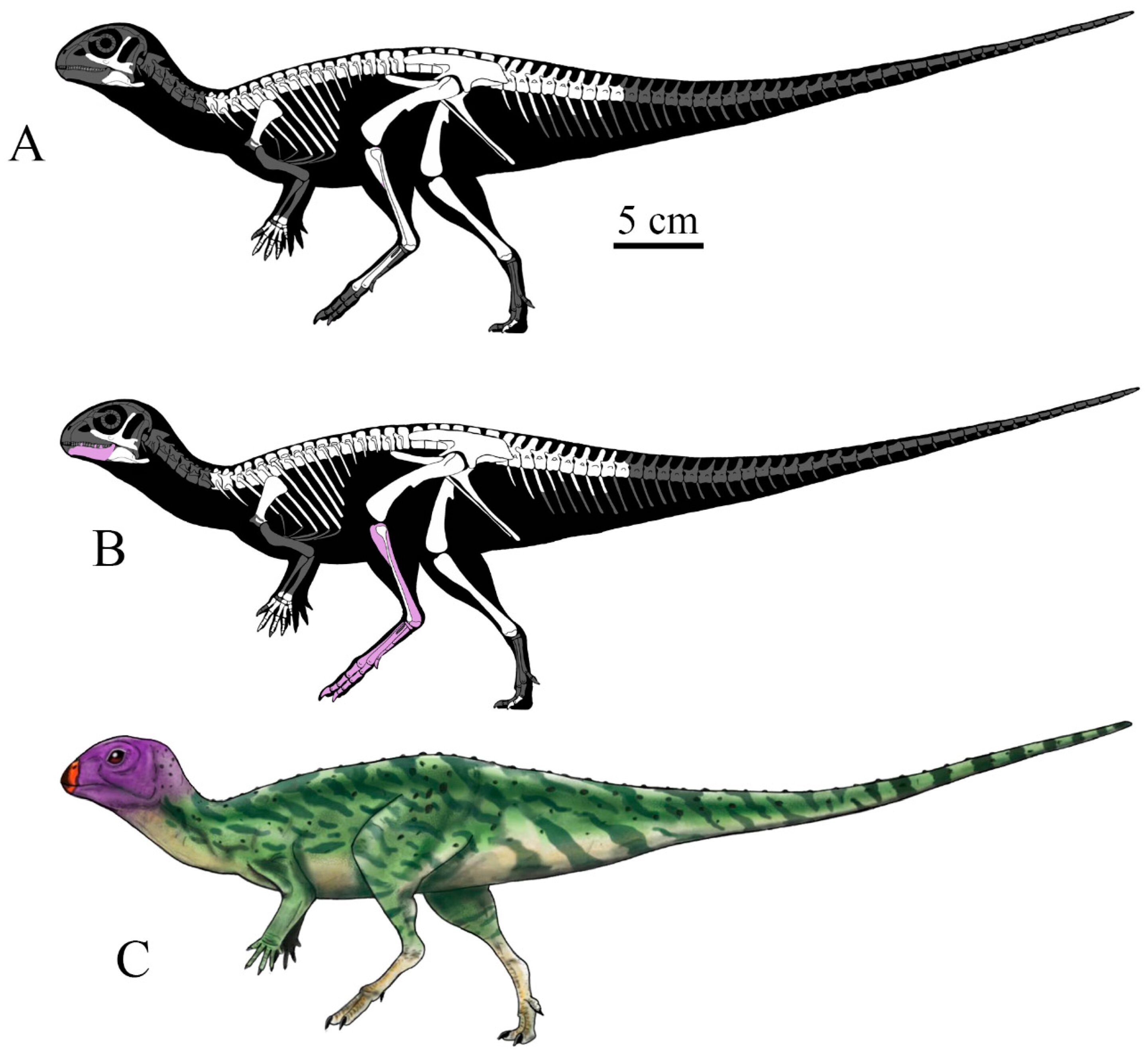A multi-institutional team of paleontologists has identified a new dinosaur species dug up in Thailand in 2012. In their paper published in the journal Diversity, the group describes where the fossil was found, its characteristics and its condition.
The fossil was uncovered at a dig site in Phu Noi, in Northern Thailand. The geological area is known as the Phu Kradung Formation. The dig site has yielded a large number of fossils over the years. In this new effort, the research team focused their effort on a fossil embedded in stone that was in good condition. It is a previously unknown species, now named Minimocursor phunoiensis.
The research team describes the fossil as an “exceptionally articulate skeleton,” and suggest it is one the most well-preserved dinosaurs ever discovered in Southeast Asia. They found it to be of the neornithischian clade, which were plant-eating dinosaurs.
The researchers also found that the dinosaur was not yet mature when it died. It had four limbs but walked on two legs. It also had a long body and long tail, and a beak-like snout with a bony lump on its jaw known as a jugal boss. It also had a ridge along its pelvis. It has been dated to 145 to 163 million years ago. The team estimates that when full grown, the dinosaur would have been approximately 2 meters long.
Overall, its physical characteristics suggest it ate vegetation and was able to run quite fast to avoid being eaten by predators. The researchers note that other fossils of the same type of dinosaur have been found in the same general area, suggesting that they were very common.
2023-07-29 05:24:02
Article from phys.org
